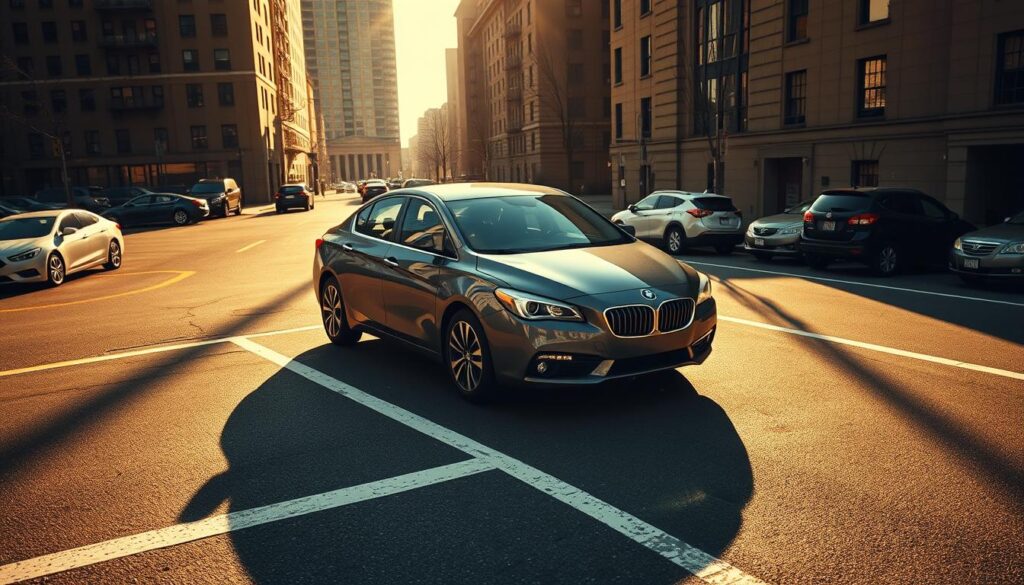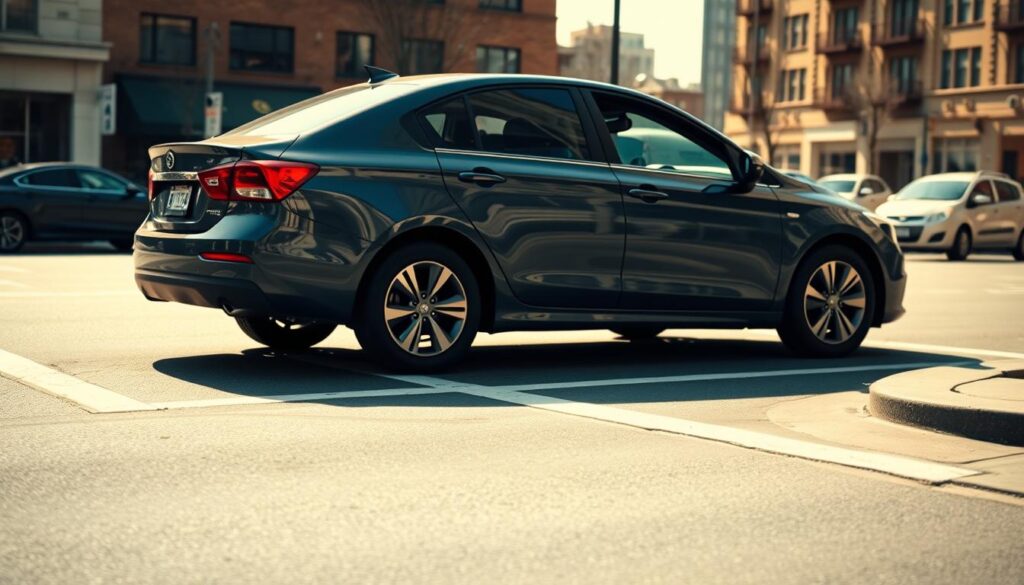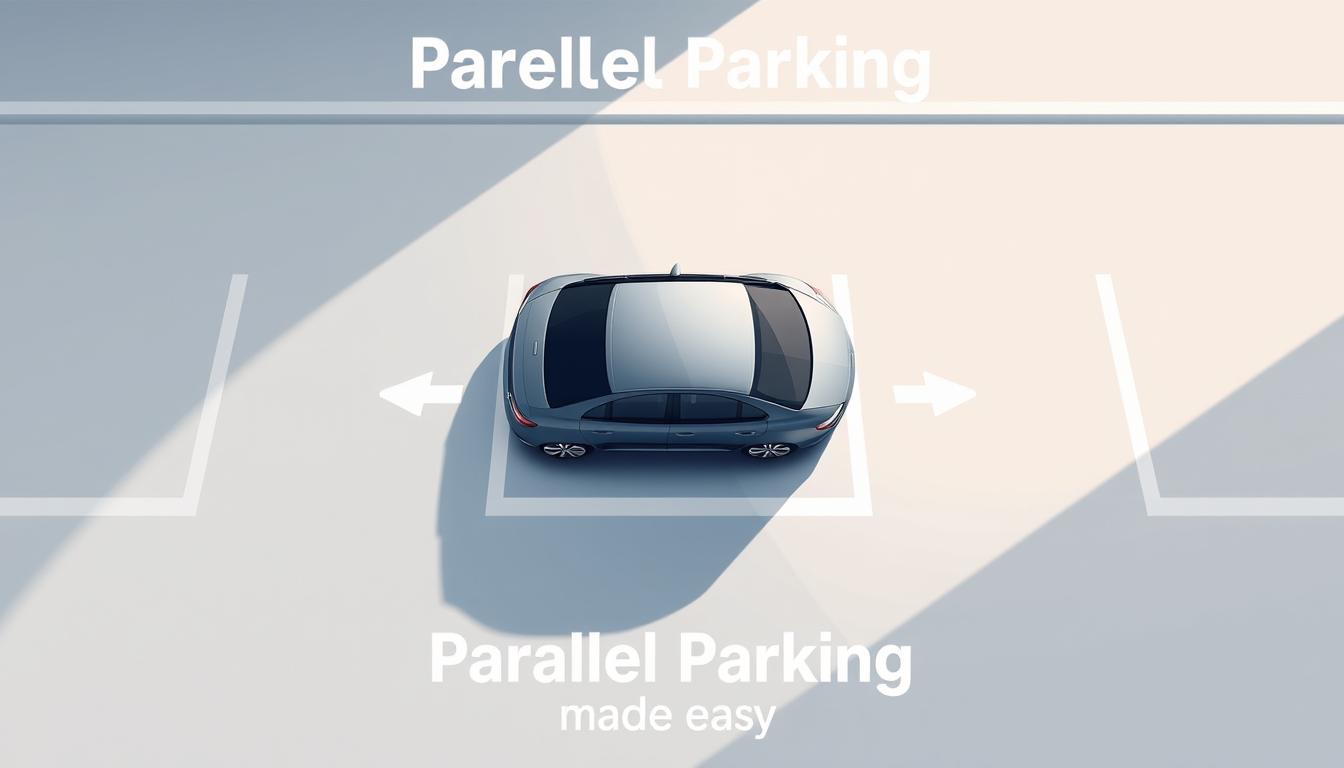Parallel Parking Made Easy
Did you know that over 30% of drivers actively avoid city streets where they might have to perform this common maneuver? It’s a skill that causes more anxiety than almost any other part of being behind the wheel.
But here’s the good news: it doesn’t have to be this way. This comprehensive guide is here to change your perspective. We will walk you through everything you need to know to master this essential technique with confidence.
Many people, especially beginners, find this task nerve-wracking. With the right approach and a few simple tips, anyone can learn to do it like a pro. We break the entire process down into simple, manageable steps.
Whether you’re preparing for a test or just want to expand your abilities, this article provides all the practical information you need. You will understand not just the mechanics, but the expert techniques that make it second nature.
Key Takeaways
- Parallel parking is a common source of driving anxiety, but it is a learnable skill.
- A step-by-step approach makes the process feel less overwhelming for drivers of all levels.
- This guide provides practical tips to build confidence for both tests and real-world situations.
- Understanding the fundamentals is key to executing the maneuver smoothly.
- Practice and patience are the most important factors for success.
- You can transform this challenging task into a simple, routine part of your driving.
Understanding Parallel Parking Basics

Urban driving presents unique challenges that test even experienced drivers. One skill stands out as particularly important for city navigation.
What Is Parallel Parking?
This technique involves positioning your automobile parallel to the road and curb. You typically fit between two other parked vehicles in a line along the street.
Unlike angled or perpendicular options, this method requires precise spatial judgment. It demands careful timing and coordinated steering movements.
Why Parallel Parking Can Be Challenging
Several factors make this maneuver difficult for many motorists. Tight spots often provide only a few extra feet beyond your vehicle’s length.
Traffic pressure from impatient cars behind you creates stress. Limited visibility makes judging distances tricky.
| Parking Type | Space Required | Difficulty Level | Common Usage |
|---|---|---|---|
| Parallel | 1.5x vehicle length | High | Urban streets |
| Angled | 1.2x vehicle length | Medium | Shopping centers |
| Perpendicular | 1.8x vehicle length | Low | Parking lots |
Real-World Importance in Urban Settings
In city centers, curbside spots are often the only option available. Residential roads frequently accommodate this style as standard.
Mastering urban parking techniques separates confident drivers from those still developing their skills.
This ability lets you utilize single spaces slightly longer than your automobile. It’s more efficient than forward approaches needing consecutive spots.
Step-by-Step Guide to Confident Parallel Parking

The key to mastering this maneuver is a clear, step-by-step method. We will walk you through the entire process from finding a spot to making final adjustments.
Breaking it into phases makes it much less intimidating. You can focus on one task at a time.
Preparing Your Vehicle and Choosing the Right Spot
Start by finding a good space. Look for one that is about one and a half times the length of your car.
This gives you enough room to maneuver comfortably. Activate your turn signal to alert other drivers.
Pull up next to the automobile in front of the empty space. Align your rear bumpers and keep a few feet between you.
A helpful tip is to line up the center of your passenger side window with the front of the parked car. This sets the perfect starting angle.
Executing the Maneuver: Steering and Reversing Techniques
Shift into reverse. Check your mirrors and blind spot for safety.
Begin backing up slowly. At the same time, turn the steering wheel sharply toward the curb.
As your front end clears the other vehicle’s bumper, start to straighten the wheel. Continue reversing slowly.
When you are almost in the spot, turn the wheel the opposite way. This guides your front end into the space.
Remember: fast steering with slow reversing is the secret to control.
Finally, check your distance from the curb using your mirror. You should be about a foot away.
Pull forward slightly to center your automobile if needed. These steps, with practice, will become second nature.
Parallel Parking Made Easy: Expert Tips and Test Strategies

Once you’ve mastered the basic sequence, implementing expert strategies can elevate your confidence significantly. These advanced techniques help you handle even the tightest urban spots with precision.
Maximizing Mirror Use and Spatial Awareness
Your mirrors are essential tools for successful parking. Use them constantly to check distances from the curb and monitor surrounding vehicles.
Slow, deliberate movements give you time to make precise steering adjustments. Rushing often leads to mistakes like hitting the curb.
Practicing with Cones and Simulated Parking Spaces
Before tackling real traffic, practice in an empty lot using cones. Set them 15-20 feet apart to simulate standard dimensions.
Regular sessions build muscle memory for steering motions. You’ll learn exactly how your specific vehicle handles during turns.
Key Considerations for the Driving Test
During your examination, evaluators watch for proper turn signal use and smooth steering. Positioning within 6-12 inches of the curb is critical.
Serious errors like hitting cones or losing control can result in test failure. Thorough preparation prevents these costly mistakes.
| Practice Method | Setup Required | Skill Focus | Ideal For |
|---|---|---|---|
| Cone Practice | 4 cones, empty lot | Spatial judgment | Beginners |
| Mock Test Runs | Instructor guidance | Test preparation | License candidates |
| Real Spot Practice | Quiet residential street | Confidence building | Intermediate drivers |
Working with a professional instructor provides personalized feedback. They can identify and correct specific challenges in your technique.
Avoid common pitfalls like turning too early or panicking under pressure. Awareness of these mistakes helps you steer clear of them during your actual test.
Conclusion
Every driver has the potential to transform parking anxiety into parking proficiency. The steps in this guide provide a clear path forward.
Remember the fundamentals: proper positioning, smooth steering, and effective mirror use. These skills build confidence for both the driving test and real-world situations.
Regular practice in quiet areas is the key to success. Find an empty lot or peaceful street to work on your technique without pressure.
Even experienced motorists once struggled with this maneuver. Give yourself permission to learn at your own pace.
This ability opens up countless urban parking opportunities. You’ll become a more versatile driver ready for any challenge on the road.
Return to this guide whenever you need a refresher. Happy parking and safe travels on your driving journey!
FAQ
What is the easiest way to learn how to parallel park?
How much space do I need between cars to attempt parking?
What’s the most common mistake people make?
How can I use my mirrors effectively for this task?
Are there any special tips for passing the driving test?

Adam Peter is a finance, travel, and automotive writer with over a decade of experience. He creates clear, practical content to help readers manage their money, explore the world with confidence, and make informed decisions about cars and travel gear. His work blends expert insight with real-world usefulness.




